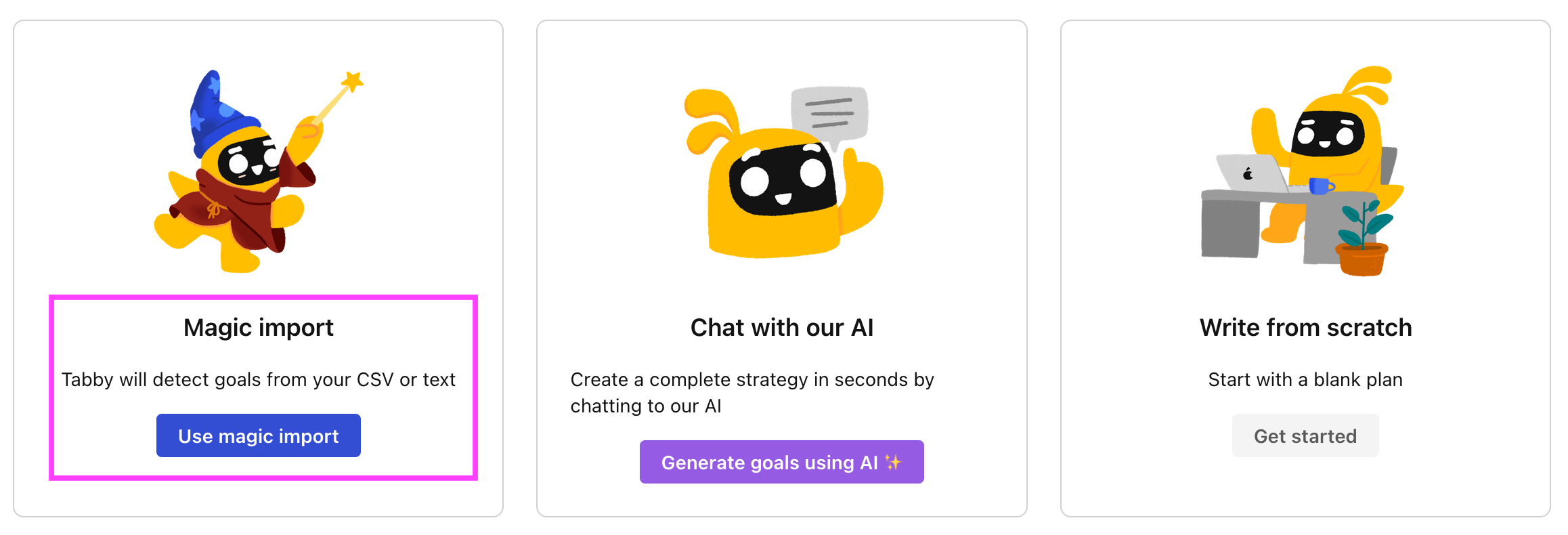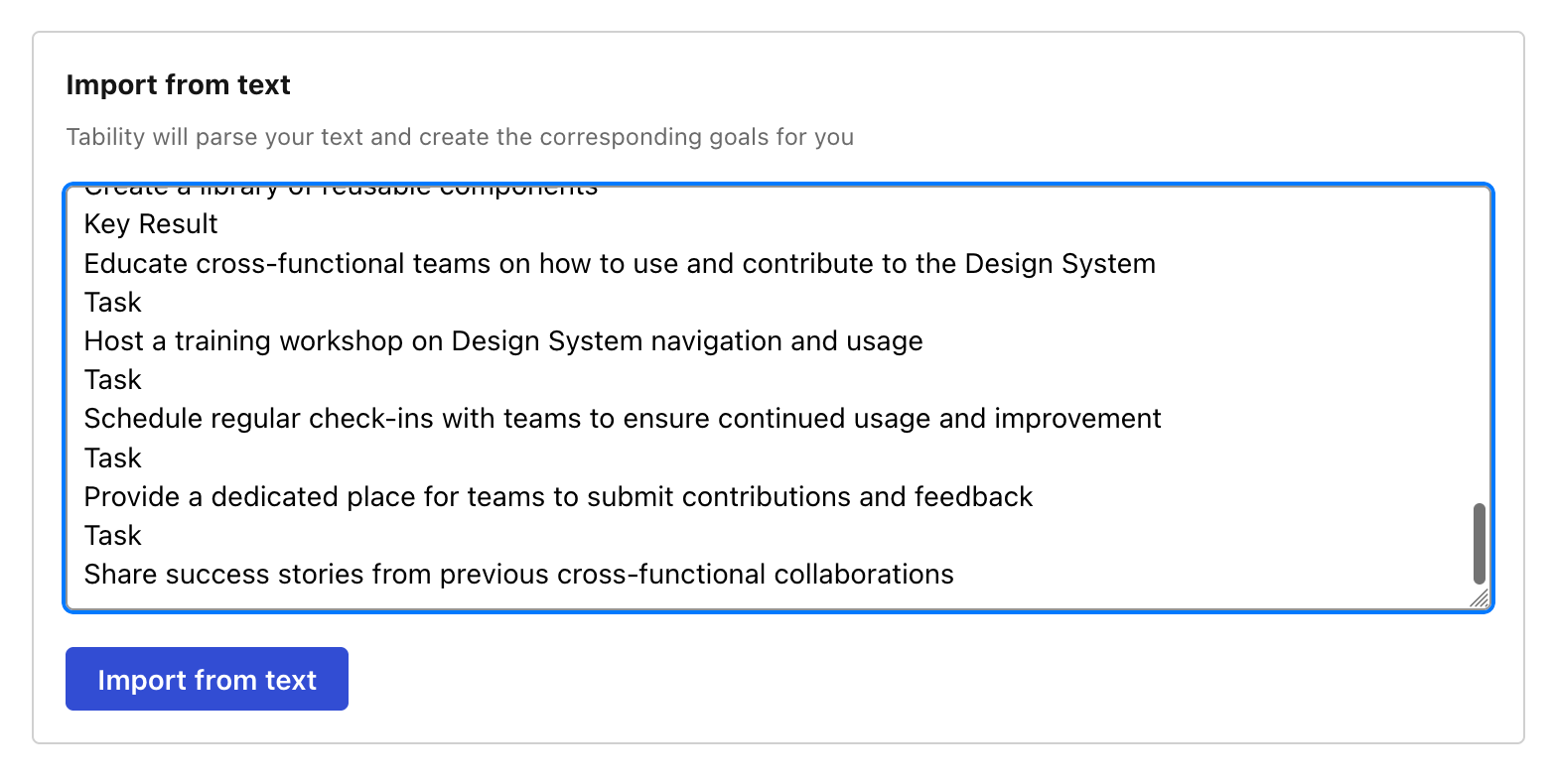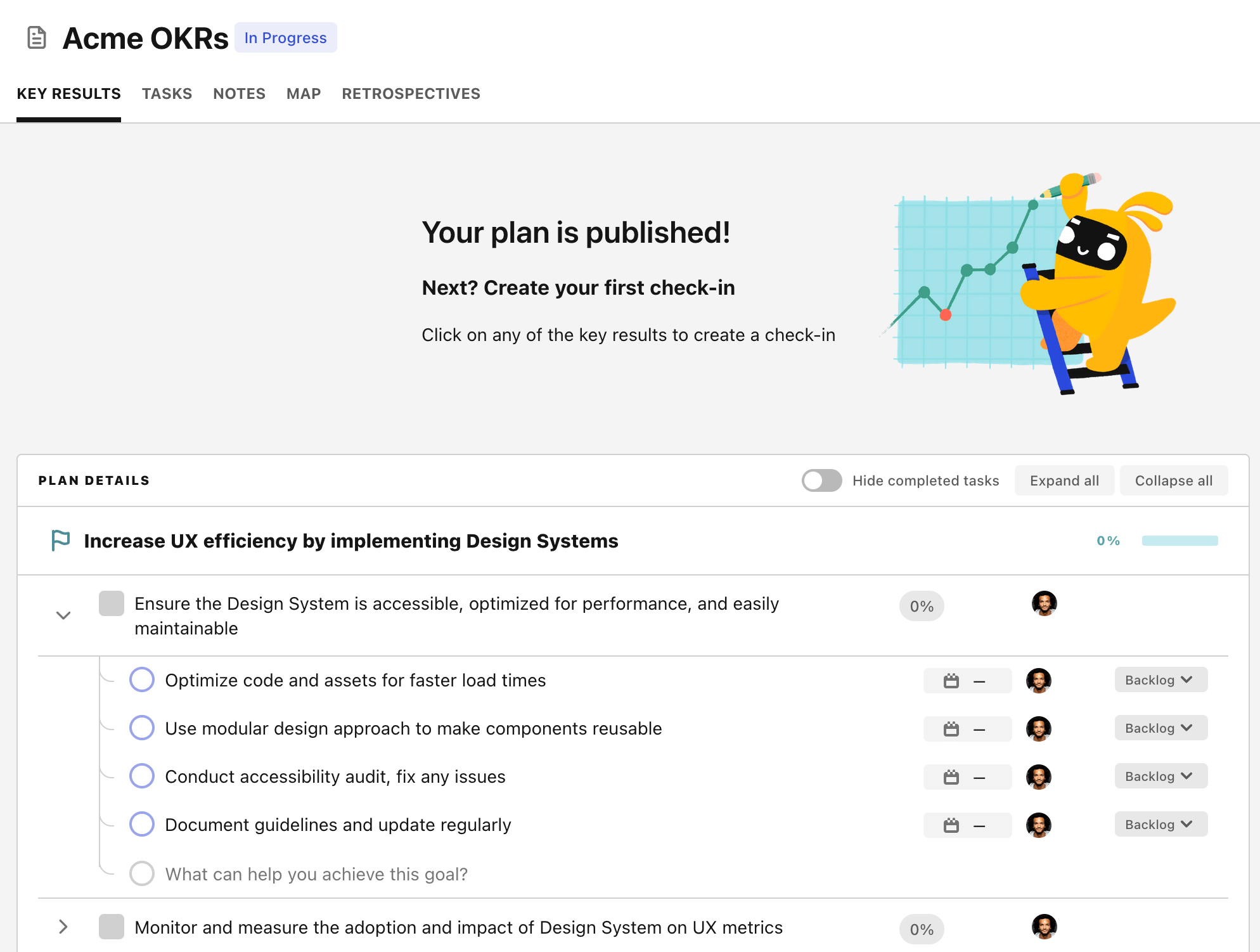OKR template to enhance inter-departmental communication and autonomy
Your OKR template
The second objective involves creating an autonomy scorecard aimed at improving departmental independence by 20%. Key action steps include identifying departmental interdependencies and bottlenecks that hinder efficiency, developing a rating system for the proposed autonomy scorecard, and implementing solutions to improve identified areas, thereby increasing independence.
The third objective calls for the implementation of bi-weekly cross-departmental meetings with a target to increase interaction by 40%. Action steps involve scheduling routine argumentations across various departments, setting up a measurement system to track the increase in interactions, and continuously encouraging and reinforcing employee participation in these meetings.
Overall, the main goal is to enhance inter-departmental communication and autonomy within the organization. This OKR is geared towards creating a more self-sufficient and collaborative work environment, which will ultimately lead to increased productivity, effectiveness, and job satisfaction among employees.
ObjectiveEnhance inter-departmental communication and autonomy
KRDecrease dependency queries by 30% via internally-developed FAQ documents
Identify frequent customer queries for FAQ inclusion
Develop comprehensive, clear FAQ documents
Incorporate FAQs into user onboarding process
KRCreate autonomy scorecard, improving departmental independency by 20%
Identify key departmental interdependencies and efficiency blockages
Develop a rating system for the autonomy scorecard
Implement strategies to address identified areas, increasing independence
KRImplement bi-weekly cross-departmental meetings to increase interaction by 40%
Schedule bi-weekly meetings between departments
Set a measure to track interaction increase
Encourage and reinforce employee participation in meetings
How to edit and track OKRs with Tability
You'll probably want to edit the examples in this post, and Tability is the perfect tool for it.
Tability is an AI-powered platform that helps teams set better goals, monitor execution, and get help to achieve their objectives faster.
With Tability you can:
- Use AI to draft a complete set of OKRs in seconds
- Connect your OKRs and team goals to your project
- Automate reporting with integrations and built-in dashboard
Instead of having to copy the content of the OKR examples in a doc or spreadsheet, you can use Tability’s magic importer to start using any of the examples in this page.
The import process can be done in seconds, allowing you to edit OKRs directly in a platform that knows how to manage and track goals.
Step 1. Sign up for a free Tability account
Go tohttps://tability.app/signup and create your account (it's free!)
Step 2. Create a plan
Follow the steps after your onboarding to create your first plan, you should get to a page that looks like the picture below.

Step 3. Use the magic importer
Click on Use magic import to open up the Magic Import modal.
Now, go back to the OKR examples, and click on Copy on the example that you’d like to use.

Paste the content in the text import section. Don’t worry about the formatting, Tability’s AI will be able to parse it!

Now, just click on Import from text and let the magic happen.

Once your example is in the plan editor, you will be able to:
- Edit the objectives, key results, and tasks
- Click on the target 0 → 100% to set better target
- Use the tips and the AI to refine your goals
Step 4. Publish your plan
Once you’re done editing, you can publish your plan to switch to the goal-tracking mode.

From there you will have access to all the features that will help you and your team save hours with OKR reporting.
- 10+ built-in dashboards to visualise progress on your goals
- Weekly reminders, data connectors, and smart notifications
- 9 views to map OKRs to strategic projects
- Strategy map to align teams at scale